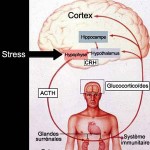Monday, 15 September 2014
The Intelligence in Our Hands

The first crisp days of autumn are great for outdoor chores like chopping firewood, installing storm windows, and raking leaves. Distracted by the blazing fall foliage, you may sometimes find yourself performing complex tasks with your hands while your mind is clearly off somewhere else. It’s as if your hands had “a mind of their own.”
But this mental aspect of manual work is not just a passing impression you may have; it’s also one of the hottest topics in cognitive science today. MIT Press has just published The Hand, an Organ of the Mind: What the Manual Tells the Mental. This collection of essays, edited by philosophy professor Zdravko Radman, examines the intimate connection between the hands and the mind not only from the neurophysiological and evolutionary angle, but from the philosophical, cultural and esthetic perspectives as well. (more…)
Body Movement and the Brain | Comments Closed
Tuesday, 2 September 2014
Nervous and Immune Systems Closely Tied
 By the late 20th century, cognitive neuroscientists had recognized that they would never truly understand how the brain functions unless they also considered the body in which it does so. This concept of “embodied” cognition implies that the brain constantly maintains a dynamic relationship with the rest of the body, which in turn is totally immersed in its physical and social environment. This model contrasts sharply with others that compare the brain to a computer or treat it as a disembodied organ that simply manipulates symbolic representations of inputs to provide appropriate outputs. (more…)
By the late 20th century, cognitive neuroscientists had recognized that they would never truly understand how the brain functions unless they also considered the body in which it does so. This concept of “embodied” cognition implies that the brain constantly maintains a dynamic relationship with the rest of the body, which in turn is totally immersed in its physical and social environment. This model contrasts sharply with others that compare the brain to a computer or treat it as a disembodied organ that simply manipulates symbolic representations of inputs to provide appropriate outputs. (more…)
Mental Disorders | Comments Closed







